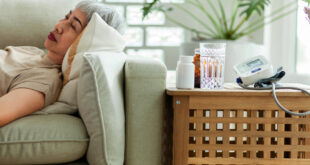Mammograms
Mammograms are very low dose breast tissue x-rays. They are used to pick up breast changes, in particular, breast cancers. Mammograms bring forward the detection time of a breast cancer, as they can detect breast changes (lumps/thickenings) which are so small they cannot be felt. As a result, survival is increased with the early detection of a breast cancer.
Types of Mammograms
There are two types of mammograms:
* A screening mammogram is performed on ‘well’ women (no breast symptoms or signs) to ‘screen’ their breasts for any signs of cancer. Presently, a screening mammogram is the best method for the early detection of a breast cancer. Screening mammograms cannot prevent development of breast cancer, but do reduce the chance of dying from breast cancer by approximately a third. The benefit of a screening mammogram (early detection and treatment of breast cancer) far outweighs any risk to a woman from the very small amount of radiation exposure received from a screening mammogram.
* A diagnostic mammogram is performed on a woman who has any breast signs and/or symptoms that require further investigation, e.g. lump, thickening, skin changes, etc, or a woman who is considered at high-risk for the development of breast cancer.
A NZ citizen or resident is entitled to:
o A free diagnostic mammogram – at any age – at a District Health Board (DHB) provided mammography service if she has significant signs and/or symptoms of breast cancer; a GP referral is required.
o A free annual diagnostic mammogram – at any age – at a DHB-provided mammography service if she has no symptoms of breast cancer, but is considered at high-risk for the development of breast cancer; a GP referral is required.
* Remember, 9 out of 10 breast lumps are not cancerous (benign).
Accuracy of Mammograms
Screening mammograms are not perfect; they do have their limitations. However, they are the best method presently for finding a breast cancer early enough so as to increase the chance of survival.
Screening mammograms are 85% effective in detecting unsuspected cancers in women over 50, and 75% effective in women under 50. The reason for only a 75% detection rate in women under 50 is due to their breast tissue being relatively dense which can make it more difficult for a radiologist to see a breast cancer on a mammogram x-ray image. As a result, some breast cancers are not seen, and thus go undetected. As some breast cancers may not be detected, it is important for all women to continue to be ‘Breast Aware’ between their mammograms (look and feel for any new or unusual breast changes).
BreastScreen Aotearoa (BSA)
The Foundation strongly supports the New Zealand National Breast Screening Programme, BreastScreen Aotearoa, which provides free breast screening mammograms to women, with no breast cancer symptoms for unsuspected cancers, between 45 and 69 years of age every two years. The programme’s aim is to reduce the number of New Zealand women who die from breast cancer. For your first free breast screening mammogram, you are required to enrol in the programme by phoning the toll free number 0800 270 200 or visit www.nsu.govt.nz
Regular Breast Self Checks
By regularly checking your breasts, you get to know how your breasts look and feel. Therefore, you may increase your likelihood of early detection of breast cancer, if it develops. The Foundation recommends women do regular breast self checks from 20 years of age. Women who carry out regular breast self checks become aware of changes to their breasts during their life.
There is some controversy regarding breast self checks and women need to be aware that breast self checks can lead to some women having – perhaps – unnecessary investigations, e.g. mammograms, ultrasound scans, biopsies
If you wish to check your breasts, good places to do this are:
* In front of a mirror
* In the shower or bath
The way you do this, doesn’t matter, as research has shown a decrease in the death rate from a diagnosis of breast cancer does not occur from following a particular breast self check technique.
The New Zealand Breast Cancer Foundation has a free shower card, ‘Priorities in Breast Awareness’ which includes information on breast self checks. To view the card on this website, click here. You can also request one by phoning 0800 902 732, or by ordering online.
Ultrasound
In many cases, ultrasound is an important complementary tool to mammography particularly where the breast tissue is dense as it is in many younger women. It also enables a doctor to accurately identify an area of the breast when a biopsy is indicated. Also, ultrasound enables the doctor to confirm that the right area has been sampled. Ultrasound uses sound waves instead of radiation so it can be used as many times as needed.
Magnetic Resonance Imaging (MRI)
An MRI scan involves no radiation exposure; it combines the use of a very strong magnet, radio waves and a computer system to provide detailed images of internal structures and soft tissue structures.
A Breast MRI scan is, on occasion, used in breast disease to determine the size and number of breast lesions, to examine the other breast and/or surveillance in women with a strong family history of breast cancer
and/or women diagnosed with a previous breast cancer.









Join the Discussion
Type out your comment here:
You must be logged in to post a comment.